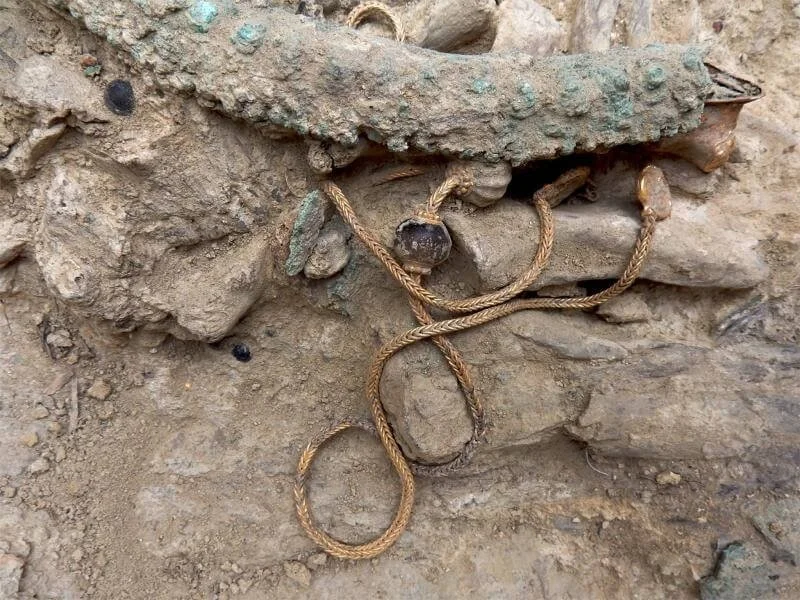The ancient fashionista's tomb, which the scientists have dubbed Natasha, was discovered when a sizable artificial reservoir in Siberia was drained during the summer.
The ancient woman - who lived before the birth of Christ - was found with her iphone-alike accessory in the depths of Siberia
It was first used during the Xiongnu empire, a vast nomad kingdom that dominated the region from the third century BC until the late first century AD.
What appears to be a smartphone is actually a piece of black gemstone jet rock with semi-precious stones inlaid in a regular pattern.
In fact, the block was employed as an elaborate belt buckle rather than being a piece of ancient technology.
“Natasha's” burial with a Hunnu-era (Xiongnu) “iPhone” remains one of the most interesting at this site,” said archaeologist Dr. Pavel Leus.
Atlantis Necropolis
“Her belt was the only one with Chinese wuzhu coins on it, which helped us date it”, said Dr. Leus.
The discovery was made at the Ala-Tey necropolis, which is located in the so-called Sayan Sea, a sizable reservoir that is located upstream of the Sayano-Shushenskaya Dam, Russia's largest power plant.
In the normally submerged “Atlantis necropolis” this summer, when the reservoir was briefly drained, a 7inx3in treasure was found.
The Siberian Times states that the ancient burial ground is typically up to 56 feet submerged.
The phone-lookalike is actually a belt buckle with inlays of semi-precious stones
There are also prehistoric civilizations' graves from the Bronze Age through Genghis Khan's reign.
It happens after the discovery of the two partially mummified prehistoric women who were interred alongside their working tools.
Formerly thought to be a priestess, “Sleeping Beauty” was dressed in delicate silk for the afterlife and is now thought to have been a leather designer.
The archaeological site is thought to be the location of a lost Atlantis-style cityCredit: IHMC RAS/Pavel Leus
The second involved the interment of a weaver who had her wooden spindle tucked away within a sewing bag.
The reservoir, which has a surface area of 240 square miles, appears to have a desert-like floor in the summer when the water level drops by over 60 feet.
On a reservoir island, a total of 110 burials have so far been found.
According to Dr. Marina Kilunovskaya of the St. Petersburg Institute of Material History Culture, “This site is a scientific sensation.”
The discovery was made in the normally submerged ‘Atlantis necropolis’ after waters fell 60 feetCredit: IHMC RAS/Pavel Leus
We are extraordinarily fortunate to have discovered these wealthy Hun nomads' graves that weren't damaged by (prehistoric) grave robbers, she continued.
Terezin, another Atlantis location in the reservoir, includes at least 32 burials that are closer to the water.
Scientists acknowledge that they are working against the clock to explore the sites and protect priceless artifacts from harm caused by the re-entering water.












